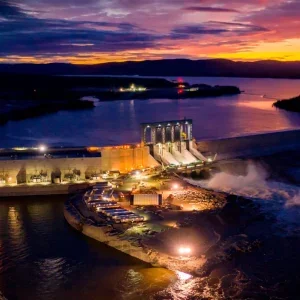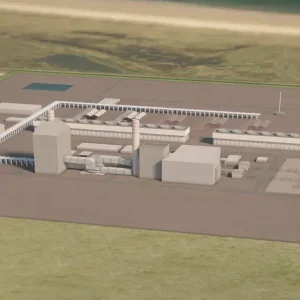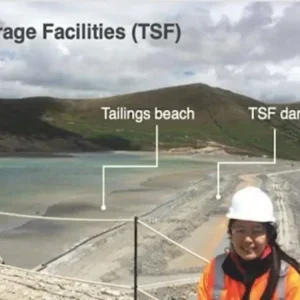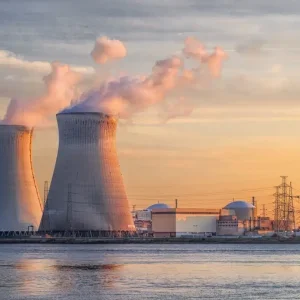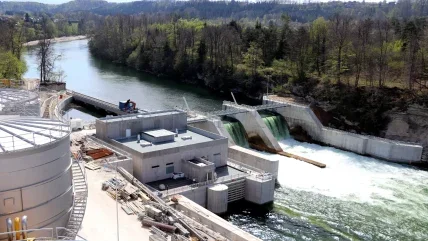
China Water Risk (CWR) has released a report called “No River, No Power – Can Asia’s rivers power growth in a changing climate?”, which maps a third of global power generation capacity to find that escalating climate risks and rivers running dry can strand sizeable portions of national power generation assets.
CWR says the report highlights clear national energy security implications for 16 countries from China, India, Pakistan, Laos, Myanmar, Afghanistan, Nepal to Bhutan and warns that climate risks are already posing problems, adding that worse is still to come unless stakeholders make the right energy decisions today for economic, water and energy security tomorrow.
Of the 1.9TW of power analysed by CWR almost half is clustered in ten rivers that flow from the Hindu Kush Himalayan Water Towers. Known as the cradles of Asia’s civilisation, these are the Amu Darya, Brahmaputra, Ganges, Indus, Irrawaddy, Mekong, Salween, Tarim, Yangtze and Yellow rivers. Furthermore, over 94% of this analysed generation needs water and almost 38% is located in basin areas that already face high to extremely high water stress or are arid.
“Components of river flow such as glacial melt, snow/rainfall and monsoon patterns are all impacted by climate change so it’s not just national power assets that can be stranded,” explained Debra Tan, Head of CWR and lead author of the report. “Lives and livelihoods are also at stake – one in two Asians live in these ten river basins where over US$4.3trillion of GDP is generated annually.”
The Asian Development Bank projects that the Asia-Pacific region’s energy demand will double by 2030, and since key types of power generation in the region such as thermal and hydropower require water to generate electricity, demand for water will also rise. And since power choices can impact water and the lack of water can strand power assets, the report pointed out that water security should inform energy security and urged governments to plan economic development and power expansion with water resource availability in mind.
“Uncertain future flows of the ten rivers and extreme weather mean we must curate mountain-to-ocean waternomic roadmaps and energy systems that are resilient to climate change. National energy and water security plans must thus dovetail. The need to do all this is ever more urgent as doing so will help us manage escalating and compounding water risks as well as meet rising demand for water,” said Tan.
As it is, extreme weather in river systems can already trigger systemic shocks on a national scale. The report says that the devastating Indus floods last year are case in point – over 30 million people in Pakistan lost their homes and its GDP took an estimated 10% hit. But impacts could be a lot worse: CWR showed the Indus river basin houses around 276 million or 88% of Pakistan’s population as well as 75% of national installed power capacity. Moreover, as 92% of national GDP is generated there – the Indus cannot be allowed to fail. As the Indus also has the highest risk exposure profiles to drought and flood risk, building resilience to extreme weather is key, said the report.
Besides Pakistan, the report also illustrated national energy dependence on singular to multiple rivers – for example, Bhutan and Nepal’s power generation face single key river risk with 100% of their generation assets located in the Brahmaputra and Ganges respectively.
Meanwhile, a third of India’s national installed capacity straddled three rivers whereas around half of China’s national installed capacity is spread across seven rivers. Beyond power generation, the report also found that people and GDP are significantly exposed to river basin risks: for China, around 44% of its population and 30% of its GDP are clustered in nine rivers; for India, 54% of its population and 43% of its GDP are clustered in four rivers.
There are also transboundary issues. While installed capacity ranged from 9GW on the Amu Darya to 373GW on the Yangtze, the report noted that some rivers only serve one country whereas others serve multiple countries. For example, power assets along the Mekong serve five countries whereas power assets on the Tarim, Yangtze and Yellow only serve China.
“This means that the transboundary management of eight out of the ten rivers should not just be about water sharing but also energy policies and development as well” said Dr CT Low, CWR’s Geospatial Risk Lead and co-author of the report. The authors acknowledge that this is a mammoth task and much more work needs to be done.
“The report is far from perfect, with clear data gaps, but given the risks, we felt compelled to make a start in unpacking Asia’s tight water-energy-climate nexus so that we can make informed energy decisions today for water tomorrow,” Low said, adding that what is clear is that the eight countries which fall into the overall high-risk group must let basin risks guide energy policies.
Dwindling reservoir levels
As per a report in Reuters, prolonged heatwaves and lower rainfall in 2023 resulted in dwindling reservoir levels and the fastest decline Asian hydropower generation has experienced for decades, leading to an increased consumption of fossil-fuels. Led by China and India, Asia’s hydropower output fell 17.9% during the seven months to July 2023 while fossil fuel-fired power rose 4.5%.
From January to August 2023, China’s hydroelectricity generation declined at the sharpest rate since at least 1989, falling by 15.9%, while Indian hydro fell by 6.2% during the same period. This was India’s sharpest decline since 2016 with its share of power output plunging to 9.2%, the lowest in at least 19 years.
Although Chinese renewables output grew by 22% and 18% in India during the same period, China increased electricity generation from fossil fuels by 6.1% to make up for the shortfall, with India boosting fossil fuel-fired power output by 12.4%.
Hydropower output is also reported to have plunged in other Asian countries such as Vietnam, the Philippines and Malaysia, mainly due to drier weather but in some cases as a result of efforts to conserve water and alter supply patterns.
Human impacts on Mekong flow
Climate-caused drought has also adversely affected the Mekong River in recent years, from the historic low flows of 2019–21 to the rare “reverse flow” that has shrunk Cambodia’s vital Tonle Sap Lake, according to the initial findings of a landmark joint study released in October 2023. Water infrastructure development has also been named as a contributing factor, impacting the natural flow regime with increased dry season flow and reduced flood season flow.
The joint study partners – the Mekong River Commission (MRC) and its upstream counterpart, the Lancang-Mekong Water Resources Cooperation Centre – presented the phase 1 findings on Southeast Asia’s most important waterway at the 13th Regional Stakeholders Forum of the Mekong River Commission.
Dr Anoulak Kittikhoun, CEO of the MRC Secretariat, says this joint study symbolises a deepening relationship and trust between the two sides. “It’s the result of an unprecedented level of effort that the MRC and LMC have invested in our existing cooperation,” Kittikhoun said. “Indeed, while we’ve conducted some joint research and studies before, this current effort sets a high bar. It truly shows a great commitment towards future cooperation between our two organisations.”
Entitled the Joint Study on the Changing Pattern of Hydrological Conditions of the Lancang-Mekong River Basin and Adaptation Strategies (the Mekong is known in China as the Lancang), the report offers key recommendations, particularly a short-term one that urges the riverine neighbours to further jointly study the different impacts of development and climate change along key parts of their common river, as well as to share critical data – including “real-time sharing of storage levels and hydropower operations.”
According to the report: “Two key factors contribute to hydrological changes in the LMB: natural factors, including precipitation patterns, evaporation rates, soil properties and topography; and human activities, such as infrastructure development, water management, land cover and land-use changes. These two factors interact and influence the amount, timing and water distribution within the basin.”
Among the most significant passages within this report, it recommends that the Mekong partners enhance notifications of any sudden change in the ways water storage operates: “As global climate change and the associated droughts and floods will play an increasingly important role in driving the basin’s hydrological conditions, it is critical for basin countries to share more information on meteorological flow conditions, extending to tributaries…Real-time data on storage levels and hydropower operations is crucial for operational models and adaptive management. Long-term data on tidal changes, water and land use, and Mekong delta groundwater levels support basin-wide research. The information-sharing platform proposed under the LMC cooperation framework provides an unprecedented opportunity.”
For this joint study, the two sides split their research into two time periods, when water storage dramatically increased from one period to the other: 2000–9 when the Lower Mekong River Basin accumulated 20% of its storage; then 2010–20 when 80% of it was collected – at a time of growing irrigation demands, declining rainfall, and generally drier, drought-induced conditions. While storage increased over time, even today it “amounts to some 27% of the mean annual runoff (MAR) at Stung Treng” in Cambodia, which is low compared with river basins in other drought-prone regions of the world; the Colorado River basin typically holds storage of more than 200% of the MAR. The MRC advocates for more Mekong storage to address future climate change, as well as for the coordinated operation of current storage.
The report also includes a call to action, beyond increased data sharing, with multiple medium-term recommendations that should be driven by “sound science and common understanding.” They include coordinated management of water resources; a comprehensive drought and flood management strategy; more joint studies; and a capacity-building plan for water policymakers, managers, engineers, and scientists, addressing knowledge gaps through formal and informal training.
Looking forwards, phase 2 of this joint study will embrace the recommendations, predict future trends in the evolving hydrology, and propose strategies for the riparian states to adapt to climate and demographic changes.
Cambodia’s top representative to the Mekong River Commission has also called for the region to improve its forecasting of worsening flood and drought, as well as the advanced warnings to the millions of riverine residents directly harmed by them.
Thor Chetha, the current Chair of the MRC Council, issued his call during a visit to the MRC Regional Flood and Drought Management Centre at the end of 2023. Chetha praised the Centre, MRC and its four Member Countries – Cambodia, Lao PDR, Thailand and VietNam – for the substantial progress in monitoring, forecasting and communicating about Southeast Asia’s most important river, yet urged even greater “collective efforts” to mitigate the flood and drought impact.
Chetha’s own compatriots have been hit hard, as Cambodia’s Tonle Sap Lake has dramatically shrunk in recent years due to low Mekong flows. With such impact in mind, he advocated for more timely, accurate information, delivered via advanced technologies and innovation; greater access to this early information for the most vulnerable residents; sharper focus on flood management and protection measures, not just forecasting, especially in residential and economic areas; and tighter cooperation with upstream countries.
“The change in hydrological conditions, flood and drought require our focused attention, closer monitoring and stronger action, with technological innovation and more linkages between the MRC Secretariat and Member Countries,” said Chetha, who’s also Chair of Cambodia’s National Mekong Committee and the Minister of Water Resources and Meteorology. “This centre’s operational capability should also be further strengthened, in the areas of its expertise and technological innovation.”
Chetha’s words were warmly received by the CEO of the MRC Secretariat, Dr Anoulak Kittikhoun who described the five areas of progress for the organisation and its members. Information sharing is at the heart of much of it – from the hydrological data that upstream neighbour China now provides to downstream riparians regarding its dry season water release and withholding, to the increased sharing of operational data by various hydropower projects.
“The MRC will continue to pursue our core principles of knowledge sharing, technological innovation and regional cooperation,” Kittikhoun told Chetha. “That’s the only way we can tackle the challenges ahead.”
Central Asian hydro
Meanwhile over in Central Asia, the Eurasian Development Bank recently suggested that the capacity of hydroelectric power plants could surge by 8900MW due to modernisation and new construction by 2035. Currently over 80 hydroelectric power plants with a total installed capacity of around 14,000MW operate in the region – one of the few globally where hydropower potential remains underdeveloped, with less than 25% being harnessed.
Although the region is bracing itself for a prolonged water scarcity crisis between 2028-9, with an estimated annual deficit of 5-12km3, the Eurasian Development Bank is keen to highlight the crucial role hydropower plays in the region, not only as a source of electricity but also in regulating river runoff for irrigation purposes. Acknowledging the imminent challenges, the region is committed to attracting investments for the multipurpose use of water resources, focusing on the development of hydroelectric power and irrigation systems.
Highlighting the dual benefits of mitigating climate change impact and ensuring economic and social stability, plans have been outlined for the construction of new hydropower plants and the modernisation of existing ones. Notable projects include the 1860MW Kambaratinskaya hydropower plant-1 in the Kyrgyz Republic and the 3600MW Rogunskaya project in Tajikistan.
As a regional development bank, EDB is poised to invest over US$400 million in the water and energy complex of Central Asia over the next three years. In 2023, EDB initiated funding for the 100MW Kulanak hydropower plant in the Kyrgyz Republic and is actively engaged in negotiations for financing other significant projects, including Kambaratinskaya and Rogunskaya.
Nepalese foundations
British International Investment (BII), the UK’s development finance institution, is helping to bring reliable and sustainable power to support Nepal’s economic transformation. Hydropower is the country’s primary source of electricity and that’s why BII says in 2019 it committed almost US$22 million to support the construction of the landmark hydroelectric plant called Upper-Trishuli-1.
It was BII’s first project finance investment in the country, with the aim of supporting Nepal’s hydropower development, and the project recently reached an important milestone when the foundation stone was laid at a ceremony in September 2023.
BII’s Nepal Country Representative, Rabi Rayamajhi, said: “We were really pleased to witness the impressive progress that has already been made in the construction. Once complete, this plant will play a significant role in bringing much-needed, reliable and sustainable power across the country.”
Expected to increase the country’s installed power capacity by ten per cent once completed, the project will provide a large proportion of its annual output during the dry season, when it is most needed, reduce reliance on imports and improve energy security.
The project aims to create a model for future private sector investment in the hydropower sector, as well as creating a benchmark for sustainable development of the sector in Nepal, especially through the inclusion of climate resilience measures. The full project is estimated to be completed by the end of 2026 and will generate 216MW of power.
This article first appeared in International Water Power magazine.


